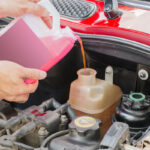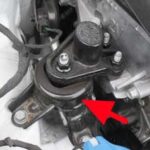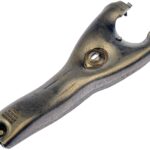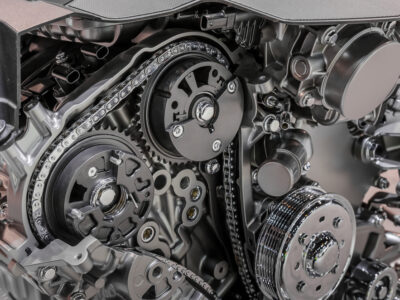
How to Check Coolant Level Toyota Corolla

Keeping your car cool isn’t just about comfort—it’s about keeping your engine alive and kicking. If you drive a Toyota Corolla, learning how to check your coolant level is one of the simplest yet most important bits of maintenance you can do yourself. Luckily, it’s quick, easy, and doesn’t require a mechanic’s toolbox.
Let’s walk through everything you need to know, from why coolant matters to step-by-step instructions on checking and topping it up like a pro.
- Why Coolant Is Essential for Your Engine
- Signs Your Coolant Might Be Low
- Safety First: Precautions Before Checking Coolant
- Locating the Coolant Reservoir in a Toyota Corolla
- Step-by-Step: How to Check Coolant Level
- Understanding Coolant Types
- How Often Should You Check Coolant Levels?
- What to Do If the Coolant Level Keeps Dropping
- Common Mistakes to Avoid
- Benefits of Maintaining the Right Coolant Level
- Final Thoughts
- FAQs
Why Coolant Is Essential for Your Engine
Coolant isn’t just colorful liquid sitting under your hood. It plays a critical role in regulating engine temperature, preventing it from overheating or freezing. Think of it as your engine’s personal thermostat.
Without the right amount of coolant, your car can overheat, warp critical engine parts, or even break down on a scorching day. That’s why keeping an eye on coolant levels is a must.
Signs Your Coolant Might Be Low
Before you even pop the hood, your car may be trying to tell you something. Here are the most common warning signs of low coolant levels.
Engine Overheating
One of the biggest red flags is the temperature gauge climbing too high. If the needle moves into the red zone, that’s your cue to check the coolant ASAP.
Sweet Smell or Steam
A sweet, syrup-like smell coming from the engine area can be a sign of a coolant leak. Steam from the hood? That’s another clear indicator.
Temperature Gauge Warning
Most Corollas have a temperature warning light. If it illuminates, don’t ignore it. Low coolant is a usual suspect.
Safety First: Precautions Before Checking Coolant
Checking coolant is easy, but safety should always come first. A hot engine and pressurized system can be dangerous if not handled properly.
Let the Engine Cool Down
Never open the coolant cap when the engine is hot. Wait at least 30 minutes after turning off the car to let things cool down.
Use Protective Gear
Wear gloves and eye protection if possible. Coolant is toxic, and you don’t want it on your skin or in your eyes.
Check the Surrounding Area
Make sure the car is parked safely away from traffic, with the parking brake on. Safety first, always.
Locating the Coolant Reservoir in a Toyota Corolla
Finding the coolant tank is the first step to checking levels.
Pop the Hood
Pull the hood release lever inside your Corolla. Then, open the hood and secure it with the prop rod if your model has one.
Identify the Coolant Tank
The coolant reservoir is usually a translucent plastic container near the radiator or engine bay. It often has a bright cap labeled with a warning sign.
You may be interested in reading How to Check Transmission Fluid Level in a Toyota Camry
How to Check Transmission Fluid Level in a Toyota CamryKnow the MIN and MAX Lines
Look closely—you’ll see “MIN” and “MAX” lines on the side of the tank. The coolant level should sit between these lines when the engine is cool.
Step-by-Step: How to Check Coolant Level
Now that you’ve found the reservoir, let’s check the coolant like a seasoned DIYer.
Step 1: Park on a Flat Surface
This ensures an accurate reading. A slanted driveway can make the coolant appear lower or higher than it actually is.
Step 2: Open the Hood
Make sure everything is cool to the touch before proceeding.
Step 3: Inspect the Coolant Level
Simply look at the tank—because it’s transparent, you should easily see where the coolant level sits relative to the “MIN” and “MAX” marks.
Step 4: Top Up If Needed
If the level is below the “MIN” line, unscrew the coolant cap slowly, then add the correct coolant type. Pour slowly to avoid spills and overfilling. Stop once it reaches just below the “MAX” mark.
Understanding Coolant Types
Not all coolants are created equal, and using the wrong one can damage your engine over time.
What Type of Coolant Does a Toyota Corolla Use?
Most modern Corollas use pink or red long-life coolant designed specifically for Toyota vehicles. Always double-check your owner’s manual for the exact type.
Why You Shouldn’t Mix Different Coolants
Mixing different colors or types of coolant can lead to sludge build-up, reduced effectiveness, and possible engine damage. Stick with one type.
How Often Should You Check Coolant Levels?
A good rule of thumb is to check your coolant every month or before any long trip. It’s a quick 2-minute task that can save you a lot of trouble down the road.
If your car is older or you live in an area with extreme temperatures, check more frequently.
What to Do If the Coolant Level Keeps Dropping
If you’re topping off frequently, it’s not just evaporation—you might have a problem on your hands.
Check for Leaks
Look for puddles under your car or moisture around the engine bay. A leaky hose or radiator could be the culprit.
Inspect the Radiator Cap
A worn or damaged cap can let coolant escape or fail to maintain proper pressure.
Visit a Mechanic
If you can’t find the source, have a professional inspect the system. Persistent coolant loss could mean a failing water pump or even a head gasket issue.
You may be interested in reading How to Check Transmission Fluid Level in a Toyota Camry
How to Check Transmission Fluid Level in a Toyota Camry 2005 Toyota Camry Engine Mount Replacement: A Comprehensive Guide
2005 Toyota Camry Engine Mount Replacement: A Comprehensive GuideCommon Mistakes to Avoid
Checking coolant isn’t rocket science, but a few common mistakes can lead to big problems.
Opening the Radiator Cap While Hot
This can release scalding coolant and steam, causing serious burns. Always let it cool.
Overfilling the Reservoir
More coolant doesn’t mean better protection. Overfilling can cause overflow and damage.
Ignoring Warning Signs
Don’t just top up and forget. If the level keeps dropping or the engine keeps overheating, investigate the cause.
Benefits of Maintaining the Right Coolant Level
Keeping your coolant at the proper level isn’t just about avoiding breakdowns—it brings several benefits.
Preventing Overheating
Coolant helps regulate engine temperature, keeping everything running smoothly even on the hottest days.
Extending Engine Life
By preventing overheating, coolant protects critical engine components and helps avoid costly repairs.
Improving Overall Performance
A well-maintained cooling system means better fuel efficiency, smoother driving, and less stress on your engine.
Final Thoughts
Checking the coolant level in your Toyota Corolla is a simple yet powerful way to keep your engine healthy. It only takes a couple of minutes, but it can save you from big repair bills and sudden breakdowns.
Make it part of your monthly car care routine. Your Corolla will thank you with smooth, reliable performance for years to come.
FAQs
1. How often should I replace the coolant in my Toyota Corolla?
Typically, coolant should be replaced every 50,000 to 100,000 miles depending on the model year and driving conditions. Always refer to your owner’s manual.
2. Can I use water instead of coolant?
Only in emergencies. Water lacks the additives that prevent corrosion and boiling. Replace with proper coolant as soon as possible.
3. Why does my coolant keep disappearing?
A persistent drop usually indicates a leak, a faulty cap, or an internal engine issue. Get it checked by a professional.
4. Is it okay to mix different coolant colors?
No. Mixing different coolants can cause sludge buildup and reduced cooling efficiency. Always use the type recommended by Toyota.
5. What happens if I overfill the coolant reservoir?
Overfilling can cause overflow when the coolant expands as the engine heats up. This can lead to leaks or pressure problems.
 How to Check Transmission Fluid Level in a Toyota Camry
How to Check Transmission Fluid Level in a Toyota Camry 2005 Toyota Camry Engine Mount Replacement: A Comprehensive Guide
2005 Toyota Camry Engine Mount Replacement: A Comprehensive Guide Ford Focus Clutch Fork Replacement: The Complete DIY and Expert Guide
Ford Focus Clutch Fork Replacement: The Complete DIY and Expert GuideIf you want to know other articles similar to How to Check Coolant Level Toyota Corolla you can visit the category Maintenance.
Deja una respuesta







More content of your interest